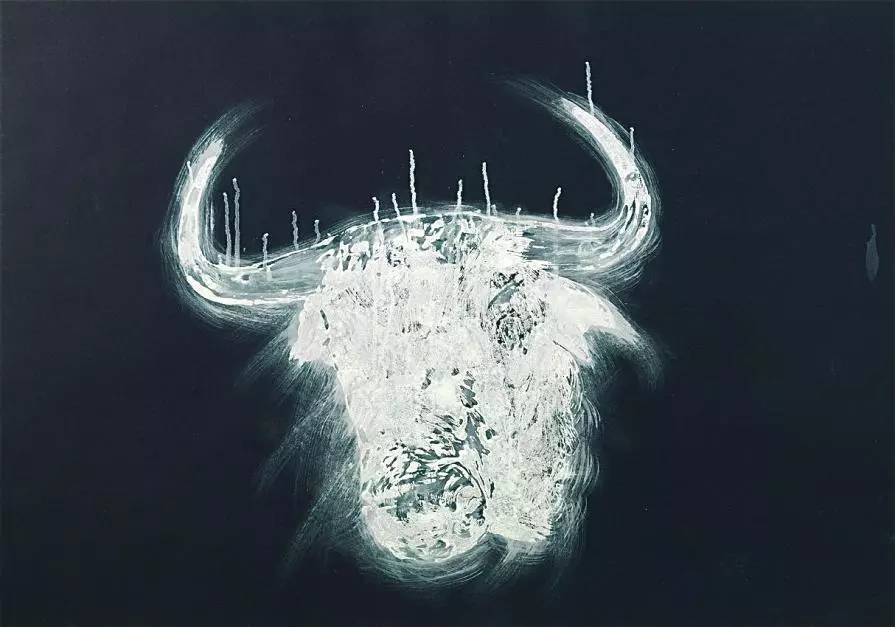White Crying Bull
Tauromachy – that rich thematic universe that accompanies the practice of bullfighting – is one of the themes that, with the self-portrait, has most intrigued the modern creator. This is not, however, due to the festive nature of the spectacle; rather it springs from the symbolism that the corrida irradiates. In fact, tauromachy appears in painting when the modern creator renounces the Apollonian dogma and enters the unknown and forbidden Dionysian world of magic, ritual, dream, which flourished in the late-eighteenth century thanks to Goya, a pioneer in his art. Bullfighting scenes condense a pulsing force that the encoded world, in its urge towards order and control, eliminates; the combat between life and death; the defiant attitude; the disturbing pose of both hunter and beast. A presence that the artist, always attent to the spirit’s constant wild inclinations, has needed to express since prehistory.
To paraphrase Jung, we might say that this is a theme that plays on the harp strings of our collective unconscious. Because the bull embodies an immense symbolic charge, which we also find illustrated in mythology: it appears as a symbol of procreation (the Minotaur), eroticism (the Rape of Europa), pride (the Biblical golden calf), orgiastic celebration (the Bacchants), as well as elegance, joy, festivity. That is also why we find scenes that depict or act as surrogates for the bull and tauromachy in Egyptian, Assyrian, Iranian, Minoan, Greek, Roman, Christian, classical, baroque and Romantic culture, and in the work of the great, visceral artists of our time: Goya, Casas, Manet, Picasso, the surrealists, Saura, Bacon, Barceló... Even Damien Hirst, who recently used the image (The Golden Calf, 2008) to critique our money culture, from which he has profited so much.
 Share / Save
Share / Save








Commenti 0
Inserisci commento